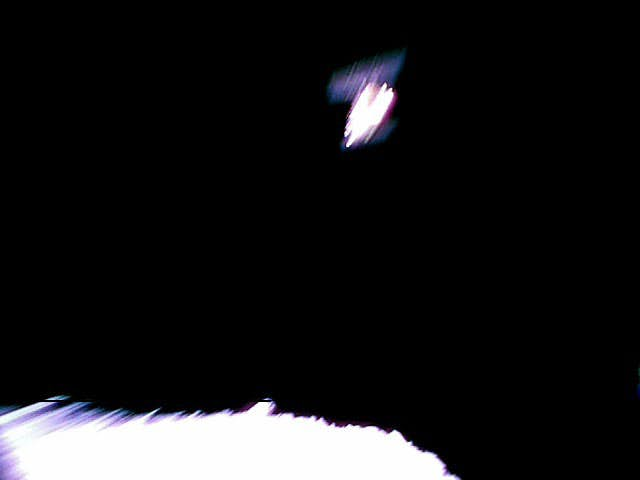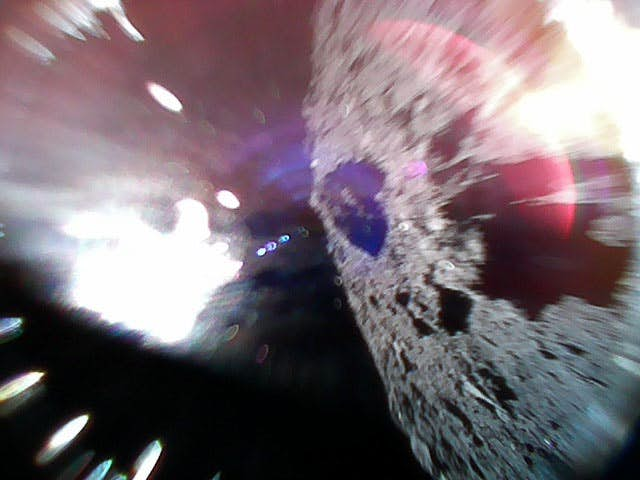
The Japanese Aerospace Exploration Agency, or JAXA, made history on September 21, 2018, when its unmanned probe Hayabusa2 successfully landed two moving robots, collectively called MINERVA-II1, on asteroid Ryugu’s surface. A few weeks later, on October 2, the spacecraft repeated the feat by deploying a third, slightly bigger, rover called the Mobile Asteroid Surface Scout (MASCOT). The information collected from the primitive asteroid could help shed light on the origins of our solar system and how the first life forms arose on Earth.

The 7-inch-wide by 2.8-inch-tall, cylinder-shaped MINERVA-II1A and MINERVA-II1B weigh just 2 pounds (1 kilogram) each. Equipped with cameras and optical sensors, their primary purpose is to image the asteroid’s surface and gather temperature measurements. This information will help JAXA scientists to identify the safest place for Hayabusa2 to land in 2019. Since Ryugu’s gravity is too weak to keep robots with wheels grounded to its surface, the tiny rovers are designed to hop around like bunnies, using a rotating motor that vaults them high into the air and allows them to travel up to 49 feet (15 meters) on each bounce. Thanks to the low gravity, the robots remain airborne for almost 15 minutes at a time. They are also designed to bounce around the surface autonomously, deciding on their own which direction to explore in.

The instrument-packed MASCOT was deployed to gather geological and physical data. This includes information like calculating the asteroid’s surface area, measuring its temperature, and detecting the magnetic field. Unlike the solar-powered MINERVA-II1 robots, the square probe, which weighs 22 pounds (10 kilograms), has an inbuilt-battery with power to last just 16 hours. However, that was plenty of time for the rover, which stayed alive for 17 hours, to complete its mission and send back all its findings to Hayabusa2, before shutting down forever.

Hayabusa2’s mission is far from over. Sometime in the next few months, the probe will let loose a third hopping robot - Minerva-II2 - onto Ryugu’s rocky terrain. However, the most exciting event will occur in January 2019, when Hayabusa2 shoots a 4-pound (2-kilogram) object at the asteroid to make an impact crater. The probe will then lower itself down to the surface and scoop up samples of the newly-exposed, carbon-rich soil. The debris will be loaded into a canister and parachuted back to Earth, where it will land by December 2020.

Launched in December 2014, Hayabusa2 entered asteroid Ryugu’s orbit on June 27, 2018. The half-mile (1 kilometer) wide asteroid, which lies 180 million miles away from Earth, was selected because it is a C-type, or carbonaceous, asteroid. Known for their high percentage of carbon, C-types are the most commonly-found asteroids in the solar system. Ryugu is also older and different in composition from the Itokawa, an S-type asteroid (made up more of stony materials and nickel-iron), which JAXA’s first Hayabusa mission was dispatched to investigate in 2003. Though not as successful, it did manage to retrieve 1500 grains of rocky material from the space rock and bring it back to Earth.
NASA is also running a similar asteroid mission. The OSIRIS-REx probe launched in December 2017 is expected to make contact with the asteroid Bennu, a B-type (primitive and carbon-rich) asteroid, in 2020. Hopefully, samples from the three space rocks will help researchers solve the age-old mystery of how life began.
Resources: NewAtlas.com,phys.org, Independent.co.uk
